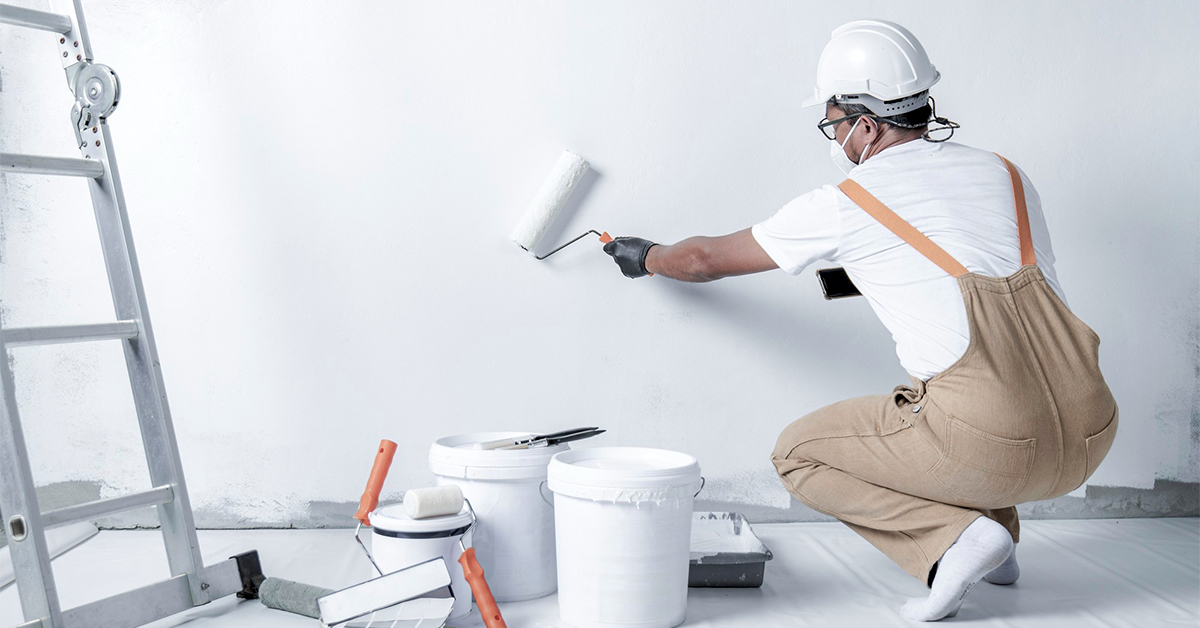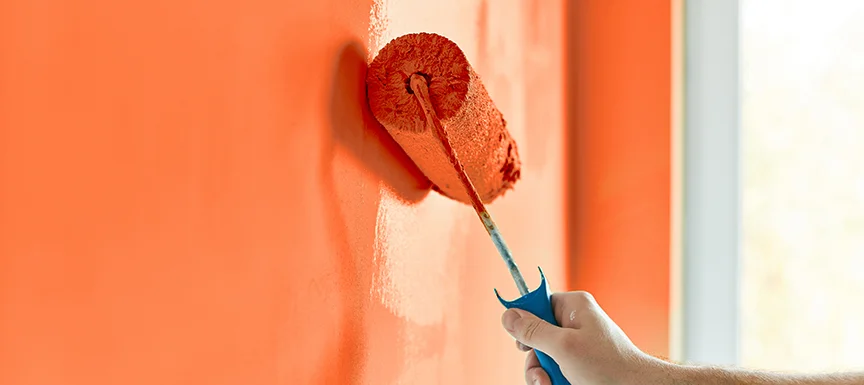Reliable Tips for Painting Success Using Supplies from paint store corpus christi tx
Checking Out the Various Sorts Of Paint: A Guide for each Job
Discovering the numerous kinds of paint is essential for achieving the desired result in any project. From water-based options that provide benefit to oil-based paints known for their sturdiness, each option has its values. Specialized paints can add special textures or coatings, while green choices deal with those seeking sustainability. Recognizing these distinctions can significantly influence the success of a painting endeavor. What variables should one think about when making the right selection?
Comprehending Paint Kinds: Water-Based vs. Oil-Based
Paint types can markedly affect a project's end result, and comprehending the distinctions in between water-based and oil-based paints is essential for educated decision-making. Water-based paints, commonly referred to as latex paints, are made up of water as the primary solvent. They completely dry swiftly, discharge fewer unpredictable organic substances (VOCs), and are simple to tidy up with soap and water. This makes them a preferred choice for interior applications and settings where air high quality is a problem.
In contrast, oil-based paints make use of organic solvents, offering a sturdy, glossy surface perfect for surfaces subjected to tear and wear, such as trim and cupboards. They take longer to completely dry, require mineral spirits for clean-up, and have a more powerful odor. corpus christi tx paint shop. Selecting in between these 2 kinds depends upon the details demands of the project, thinking about variables such as desired surface, application atmosphere, and convenience of upkeep. Each kind has distinctive advantages and limitations, assisting the option procedure
The End Up Issues: Choosing Between Matte, Satin, and Gloss
When choosing a paint surface, the selection in between matte and shiny alternatives significantly affects both aesthetic appeals and performance. Matte coatings supply a refined, non-reflective appearance that can conceal surface blemishes, while shiny finishes give sturdiness and convenience of cleansing. Recognizing the advantages and factors to consider of each can help in making an informed decision for any painting job.
Matte Complete Advantages
Numerous property owners discuss the values of different surfaces, matte paint uses unique benefits that make it a popular option for both interior and exterior applications. One of the main benefits of matte finish is its capacity to hide surface blemishes, producing a smoother appearance on wall surfaces. This quality is specifically helpful in older homes or spaces with irregular surface areas. Additionally, matte paint soaks up light instead than reflecting it, which can boost the aesthetic of an area by offering an extra soft and sophisticated appearance. Matte surfaces are often much easier to touch up than glossier options, as they can mix extra perfectly when used over existing paint. In general, matte paint is a superb choice for those seeking an improved and stylish surface.
Shiny Finish Considerations
A shiny finish can considerably modify the perception of an area, supplying a reflective and smooth top quality that boosts both color vibrancy and light within a room. This surface is usually favored for high-traffic areas and surfaces like bathroom and kitchens, where sturdiness and simplicity of cleansing are essential. Its reflective nature can highlight flaws on wall surfaces, making correct surface area prep work essential. Shiny paints additionally tend to show fingerprints and smudges much more readily, necessitating routine maintenance. Furthermore, illumination plays a considerable function; in brilliant settings, a shiny finish may create glare, affecting the overall aesthetic. Consequently, careful consideration of the particular application and environment is very important when selecting a shiny surface for any kind of job.
Specialty Paints: When to Use Textured or Chalk Paint
Specialty paints, such as textured and chalk paint, deal unique visual and sensible advantages that can improve different surfaces. Textured paint is optimal for producing depth and dimension on wall surfaces, concealing flaws while adding a three-dimensional feeling. It is specifically helpful in high-traffic areas where resilience and aesthetic passion are necessary.

Both kinds of specialty paints can transform spaces, but choosing the best one depends on the desired effect and surface area needs. Distinctive paint might fit larger areas, while chalk paint can renew smaller sized products, showcasing imagination and personal style in any kind of task.
Exterior Paints: Shielding Your Surface Areas From the Aspects
Outside paints are necessary for securing surfaces against various weather. Recognizing their weather condition resistance functions, proper surface area prep work demands, and effective application methods can significantly improve toughness and efficiency. This section will outline vital considerations for choose and utilizing outside paints efficiently.
Climate Resistance Includes
Weather condition resistance is a vital function of exterior paints, as it figures out how well surfaces can withstand the extreme aspects of nature. Top quality outdoor paints are created to withstand damages from UV rays, dampness, and temperature level variations. UV resistance guarantees colors remain lively over time, protecting against fading and staining. Moisture resistance shields against mold and mold, which can compromise the honesty of surface areas. Additionally, paints with outstanding temperature resistance can get and broaden without cracking, keeping their protective high qualities. When selecting outdoor paints, it is vital to think about these climate resistance features, as they add to the longevity and resilience of colored surfaces, making specific they remain cosmetically pleasing and practical in spite of direct exposure to the components.
Surface Preparation Demands
Appropriate surface prep work is an essential action in accomplishing the most effective outcomes with outdoor paints. To ensure excellent attachment and resilience, surfaces have to be completely cleaned up, removing grease, mildew, and dust. This can be achieved utilizing a stress washing machine or a scrub brush with a suitable cleaning option. As soon as cleansed, surfaces should be evaluated for any type of peeling or flaking paint, which must be scraped away to create a smooth structure. Fixing any cracks or openings is additionally necessary, as these can enable moisture infiltration. Additionally, sanding rough areas promotes much better paint adhesion. Using a primer fit for exterior use can enhance the paint's efficiency, assuring a lasting surface that endures the aspects. Correct preparation is crucial to an effective exterior painting job.
Application Techniques Tips
While using exterior paints, it is vital to use reliable methods that ensure surface areas are well-protected versus the aspects. First, pick the right day for painting; low moisture and moderate temperatures enhance bond and drying out. Prepping the surface thoroughly-- cleaning, fining sand, and priming-- ensures far better paint attachment and toughness. Utilizing top notch brushes or rollers can give a smoother finish, while spray painting might cover large areas efficiently. Using paint in thin, also coats protects against drips and runs. It is advisable to comply with producer directions regarding drying times between coats. Ultimately, confirm correct ventilation during application to facilitate drying and reduce exposure to fumes. These methods substantially boost the long life and performance of outside paint.
Eco-Friendly Options: Low-VOC and Zero-VOC Paints
As customers come to be progressively familiar with the environmental influence of their options, low-VOC and zero-VOC paints have arised as popular alternatives. These paints are created to include fewer unpredictable natural substances (VOCs), which are chemicals that can vaporize right into the air and contribute to air contamination and illness. Low-VOC paints commonly include a limited amount of VOCs, while zero-VOC paints have minimal levels, making them much safer for both interior and exterior usage.
The advantages of making use of zero-voc and low-voc paints expand past ecological considerations; they likewise improve interior air high quality, reducing the danger of allergic responses and breathing issues. Many producers now use a selection of shades and coatings in green alternatives, making it less complicated for customers to discover ideal products for their tasks. By choosing for these paints, individuals can add to a healthier setting while still achieving the aesthetic they desire in their areas.
Devices and Methods for a Remarkable Application
Achieving a remarkable paint application needs the right tools and methods, which can considerably improve more info the result. Selecting the ideal brush or roller is important; brushes function well for edges and elaborate areas, while rollers cover larger surfaces effectively. Using top quality products guarantees better paint circulation and minimizes touches. For excellent results, surface area prep work is essential. This consists of cleansing, sanding, and priming surfaces to promote attachment.
Method additionally plays a significant function. The "W" approach with a roller aids to equally disperse paint, while long, smooth strokes with a brush stop visible lines. Working in sections enables for much better control and blending. Additionally, applying slim layers is more suitable to thick layers, lowering the danger of drips and irregular textures. Lastly, maintaining a damp side throughout application aids accomplish smooth adjustments between areas. By incorporating these devices and methods, one can attain a specialist and sleek surface.
Tips for Preserving and Caring for Your Painted Surfaces
Proper upkeep and treatment of colored surfaces can substantially extend their life expectancy and protect their appearance. Normal cleaning is necessary; making use of a soft towel or sponge with light soap and water can get rid of dust and dirt without damaging the paint. It is suggested to prevent rough cleaners or scrubbing pads, as these can scratch the surface area. Furthermore, applying a fresh layer of paint every couple of years can rejuvenate the color and protect versus wear.
For outdoor surface areas, checking for signs of peeling or fading routinely is very important. Quickly attending to any type of issues avoids additional damages. In areas susceptible to dampness, such as restrooms, making use of mold-resistant paint and making sure appropriate ventilation can aid keep the integrity of the paint. Utilizing protective surfaces can protect against UV rays and spots, ensuring that painted surfaces stay attractive and lively for years to come, eventually enhancing the general aesthetic of the space.
Visual Frequently Asked Questions
Can I Mix Different Types of Paint With Each Other?
Blending various kinds of paint is typically not advised, as it can bring about issues like poor adhesion, inconsistent structure, or unanticipated chemical responses. It's best to use compatible paints for optimal outcomes and longevity.

How Do I Correctly Shop Leftover Paint?
To properly keep leftover paint, secure the container tightly, label it with the day and color, and maintain it in a trendy, completely dry area far from straight sunshine and extreme temperatures for optimal preservation.
What Is the Ideal Way to Dispose of Extra Paint?
The most effective method to deal with extra paint is to examine regional regulations, as lots of areas have assigned contaminated materials facilities. Conversely, consider donating usable paint to neighborhood organizations or institutions for their jobs.
Exactly How Can I Inform if Paint Is Still Good to Make Use Of?
To identify if paint is still great, analyze its consistency, color, and scent. If it shows up separated, has an undesirable smell, or shows substantial changes in texture, it's likely no more usable.
Exist Age Restrictions for Purchasing Paint Products?
In lots of areas, there are no specific age limitations for acquiring paint products. Some shops might require consumers to be at the very least 18 years old, particularly for products having solvents or hazardous materials.
Paint types can substantially impact a project's result, and comprehending the distinctions in between oil-based and water-based paints is vital for educated decision-making. Water-based paints, typically referred to as latex paints, are composed of water as the primary solvent. In contrast, oil-based paints use organic solvents, supplying a resilient, glossy coating suitable for surface areas revealed to wear and tear, such as trim and cabinets. Specialty paints, such as textured and chalk paint, offer unique visual and useful benefits that can improve different surfaces. In areas susceptible to dampness, such as washrooms, making use of mold-resistant paint and making certain appropriate ventilation can help preserve the integrity of the paint.